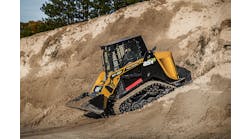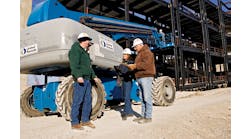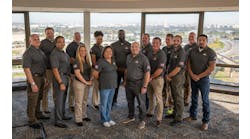WESTWOOD, Mass. — Westwood, Mass.-based LoJack Corp. recently announced the results of its sixth annual Construction Equipment Theft Study in a report that provides information on the growing problem of equipment theft, which the company says costs construction companies up to $1 billion per year in lost assets.
According to the study, which analyzed LoJack stolen vehicle recovery reports for the calendar year 2006, more than $18.6 million in stolen construction equipment assets were recovered by LoJack last year, up more than 18 percent from 2005. Since LoJack entered the construction market in 2000, the company has recovered nearly $70 million in stolen construction equipment.
This year's study showed that professional theft rings rose again in 2006, with law enforcement discovering 14 theft rings and chop shops (vs. 11 in 2005) through tracking and recovering stolen equipment that was equipped with the LoJack system. Through these discoveries, police recovered more than $3 million in additional stolen assets that were not LoJack-equipped. In one theft ring bust alone in Los Angeles, police tracked a LoJack-equipped Ingersoll Rand skid steer and recovered it along with more than $750,000 in additional stolen construction equipment, much of which was intended for shipment overseas to Russia and Germany.
“Professional thieves see construction theft as a low-risk, high-reward theft opportunity,” said Richard Riley, LoJack's chairman and CEO. “Typically, the risk of being caught is low because equipment is difficult to trace and is often located on remote, unsecured jobsites. Since construction equipment carries a hefty price tag, the rewards for thieves are high. That's precisely why equipment owners need to have a solid action plan to protect their equipment and their businesses from theft. That plan should involve keeping good records of all equipment, employing as much physical security on the jobsite as possible and using products that not only attempt to deter thieves, but also track and recover equipment if it is stolen.”
These common equipment theft targets represented more than 70 percent of all construction equipment recoveries documented by LoJack in 2006. More than 73 percent of the equipment stolen and recovered was five years old or less.
Rates of equipment theft and recovery were highest in those states where rapid growth is fueling construction projects. Additionally, theft rose in Louisiana this past year because of increased construction following Hurricane Katrina.
The report also indicated that construction theft is a local issue. In 98 percent of the cases, the stolen equipment was recovered in the same state in which the theft was reported. It was either in a storage facility or in use on a local jobsite. Unlike auto theft, which has a higher incidence in major cities around the country, construction theft is not confined to city streets and urban areas. Rather, it is often located in suburban areas where construction growth is high.
The 2006 LoJack Construction Equipment Theft Report is based on state theft statistics and equipment recoveries documented by LoJack in 26 states from January to December 2006. LoJack leverages its technology, direct connection with law enforcement and proven processes to be a global leader in tracking and recovering valuable mobile assets.
Based on LoJack's recovery data, the following are the top 10 states with the highest occurrence of equipment theft/recovery:
- California
- Florida
- Texas
- Arizona
- Georgia
- Nevada
- New Jersey
- Maryland
- Illinois
- Louisiana
The study also revealed that once again the newer equipment on the jobsite is the most common theft target because of its higher resale value. The types of equipment most frequently stolen are (in order):
- Backhoe loaders, skip loaders, wheel loaders
- Skid-steer loaders
- Generators, air compressors, welders
- Forklifts and scissorlifts
- Light towers
- Light utility/work trucks
- Trailers





